Washington State Accessible IT Capacity Building Institute on Policy #188 (Jan 2018)
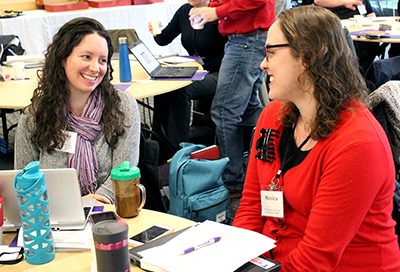
January 11, 2018
Seattle, WA
This publication shares the proceedings of Washington State Accessible IT Capacity Building Institute on Policy #188, which was held in Seattle, Washington on January 11, 2018. Attendees included disability service and computing professionals and Policy #188 coordinators from postsecondary institutions across Washington State. Policy #188 serves to ensure that IT procured, developed, and used by state agencies, including public colleges and universities, is accessible to and usable by individuals with disabilities.
These proceedings may be useful for people who
- participated in the CBI,
- have been identified to be the coordinator regarding the agency’s information technology accessibility plan and to support complaint resolution,
- are developing policy and processes to support and ensure compliance with this policy and associated standard, and
- are addressing similar accessible IT issues at postsecondary institutions nationwide.
This event was sponsored by UW Accessible Technology Services (ATS) at the University of Washington (UW), a UW-IT (University of Washington Information Technology) unit that directs both the Access Technology and DO-IT (Disabilities, Opportunities, Internetworking, and Technology) Centers. The meeting was facilitated by Dr. Sheryl Burgstahler, the director of ATS, and Terrill Thompson, accessibility technology specialist. ATS’s two centers are dedicated to empowering people with disabilities through technology and education. They promote awareness and accessibility to maximize the potential of individuals with disabilities and make our communities more vibrant, diverse, and inclusive.
The DO-IT Center strives to
- increase the success of people with disabilities in challenging academic programs and careers;
- promote the application of universal design to physical spaces, information technology, instruction, and services;
- freely distribute online content, publications, and videos for use in presentations, exhibits, and the classroom; and
- provide resources for students with disabilities, K-12 educators, postsecondary faculty and administrators, librarians, employers, parents, and mentors.
The Access Technology Center (ATC) focuses on ensuring UW students, faculty, and staff with disabilities have the same access to technology—including computers, software, and special equipment—as other students, faculty, and staff. ATC staff help individuals select and use assistive technology and supports a showroom with numerous products:
- speech and braille output
- screen magnification
- alternatives to the keyboard and mouse
- speech recognition software
- tools to make reading and writing easier and computer use more comfortable
- the capacity to create documents in e-text and braille
The show room includes a collection of accessible science equipment such as automatic stirrers, tactile measuring devices, and talking calculators. The ATC provides braille embossing and tactile graphics for the UW community.
ATC staff promote the development and use of accessible technology products by
- encouraging student computing facilities to include assistive technology;
- offering courses, delivering presentations, and conducting ATC tours for UW classes and other groups;
- working with campus units to prepare documents, videos, and other materials in accessible electronic formats;
- assisting campus web developers in designing accessible websites and applications;
- working with vendors of IT products used by the UW to improve accessibility; and
- supporting a central resource to provide guidance to technologists and administrators at the UW and beyond.
About the CBI
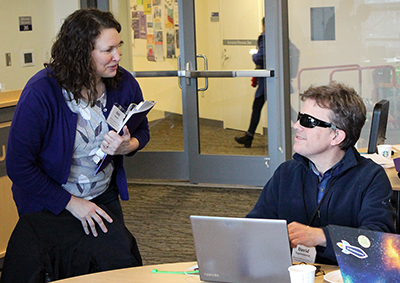
The Washington State Accessible IT Capacity Building Institute on Policy #188 provided a forum for prioritizing work to help every institution meet the requirements presented in the Policy. Attendees included disability service and computing professionals and Policy #188 coordinators from postsecondary institutions across Washington State. This CBI aims to improve the accessibility of IT developed, procured, and used by Washington State postsecondary institutions. Our objectives include increasing our capacity to build upon the following:
- understanding of federal legislation and Washington State Policy #188
- knowledge of successful practices
- relationships between those who implement Policy #188
The CBI included presentations and discussions. Participants from various institutions shared promising practices and successful endeavors in accessible IT. In small working groups, participants also responded to the following questions:
- What challenges have you encountered in implementing Policy #188? What strategies, if any, have you found to overcome them?
- How can campuses work together to implement Policy #188?
In this CBI
- all participants contributed to its success,
- experts in key topic areas were in the audience, and
- new ideas evolved from discussions.
CBI participants shared their diverse perspectives and expertise. The agenda for the CBI and summaries of the presentations are provided on the following pages.
CBI Agenda
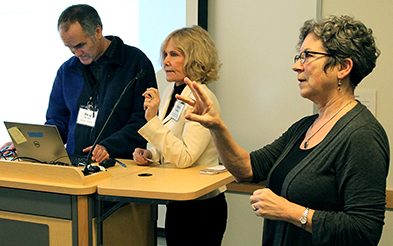
8:00 – 9:00 am
Light Breakfast and Networking
9:00 – 9:30 am
Welcome, Introductions
Meeting Goal: Improve the accessibility of IT developed, procured, & used by public postsecondary institutions in Washington State
Objectives:
- Increase understanding of requirements of Policy #188 and successful practices
- Share progress and plans for implementing Policy #188
- Build relationships between Policy #188 coordinators
9:30 – 10:30 am
Overview of Legal Foundation for Policy #188
Lessons Learned from Resolutions of Legal Challenges Regarding the Accessibility of IT at Other Schools
Progress at the UW
Q&A
10:45 – 12 noon
Successful Practices and Lessons Learned in Implementing Policy #188—Each will speak up to 10 minutes about overall progress or a specific successful practice. Q&A for all will be at the very end.
- Amy Rovner, Shoreline Community College
- Craig Kerr, Edmonds Community College
- Monica Olsson, Tacoma Community College
- Ward Naf, Whatcom Community College
12:00 – 12:45 pm
Lunch & Discussion: What challenges have you encountered in implementing Policy #188? What strategies, if any, have you found to overcome them?
Write responses on flip charts & handouts
1:00 – 1:30 pm
Discuss Outcomes from Lunch Discussion
1:30 – 2:15 pm
Small Group Discussions: How can campuses work together to implement Policy #188?
Write responses on flip charts & handouts
2:30 – 3:00 pm
Report Out From Small Group Discussions
3:00 – 4:00 pm
Successful Practices and Lessons Learned in Implementing Policy #188—Each will speak up to 10 minutes about overall progress or a specific successful practice. Q&A for all will be at the very end.
- Patrick Pow, University of Washington, Tacoma
- Bridget Irish, The Evergreen State College
- Carly Gerard, Western Washington University
- Gaby de Jongh, IT Accessibility Specialist
4:00 – 5:00 pm
Further Discussion & Plans for the Future
Evaluation
Presentation Summary
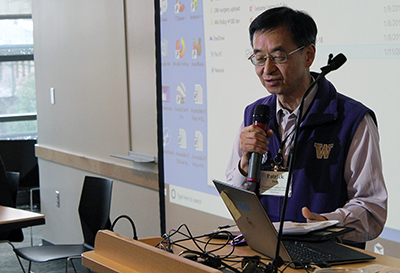
Overview of Legal Foundation for Accessible IT
Presenter: Sheryl Burgstahler, University of Washington, with input from attendees
Educational institutions across the nation are under scrutiny for failing to offer accessible classes and online resources. Many civil rights complaints have been made because IT is not accessible to individuals with disabilities—including uncaptioned videos, unreadable PDFs, and inaccessible websites and information kiosks. The legal basis for these civil rights complaints is Section 504 of the Rehabilitation Act of 1973, the Americans with Disabilities Act (ADA) of 1990 and it’s 2008 amendments, and other state and local laws. Policy #188 can help us comply with these laws and collaborate in our efforts to ensure that the IT we develop, procure, and use is accessible to all faculty, students, staff, and visitors.
According to the U.S. Department of Justice and the Office of Civil Rights of the U.S. Department of Education, “accessible” means “a person with a disability is afforded the opportunity to acquire the same information, engage in the same interactions, and enjoy the same services as a person without a disability in an equally effective and equally integrated manner.” On our campuses, everyone’s ability to see, hear, learn, walk, etc. falls somewhere on a continuum. Regardless of where that is, we want to ensure that they have access to the IT we procure, develop and use.
There are two approaches for making our campuses accessible: accommodations and universal design. Accommodations are reactive and allow us to fix a product or environment to be accessible to an individual who finds it inaccessible (e.g., captioning a video when a student with a hearing impairment requests it). Universal design is the proactive approach to create all aspects of a product or environment as accessible as possible prior to completion. A building that is technically accessible would have a separate ramp for people with wheelchairs, while a building that is universally designed would have one entrance that is accessible for all.
To make IT accessible, software and websites should be designed with disabilities and assistive technology in mind. Some assistive technology emulates a keyboard but not a mouse, tabs from link to link, reads from heading to heading, and cannot read aloud content embedded in images content. This means all information technology needs to be created with keyboard-only functionality, alternative text, descriptive links, structured hierarchical headings, video captions, and transcribed audio. Considering the functionality of assistive technology can lead to better, more accessibly designed IT.
From resolutions schools have agreed to as a result of complaints of inaccessible IT, we have learned the importance of gaining support from key leaders, building on existing roles and processes, developing partnerships with vendors, applying top down and bottom up approaches, sharing consistent messages on accessibility, securing a leadership commitment, leveraging third parties for consultation and audits, adopting a reporting process, engaging with community members with disabilities, and ensuring wide publication of accessibility issues and solutions.
The University of Washington (UW) utilizes these resolutions, the latest EDUCAUSE IT Accessibility Risk Statements and Evidence report, and Policy #188 to guide its steps towards improved IT accessibility. UW promotes accessibility within an inclusive campus culture. Tasks IT departments can take on include the following:
- Undertake efforts that are both reactive and proactive and top-down and bottom-up
- Create an annual reports regarding IT accessibility
- Model IT accessibility compliance after IT security compliance efforts
- Build on current policy and procedures
- Promote accessibility within context of UD and civil rights
- Increase training, consultations, captioning parties, capacity building institutes, and other activities
- Proactively test existing websites, PDFs, and documents
- Offer incentives to encourage continued accessibility compliance
- Work in a committee to find and fix accessibility issues
Learn more about what the UW is doing, see other institution’s civil rights complaint resolutions, and find more resources at the UW Accessibility Website.
Successful Practices and Lessons Learned in Implementing Policy #188
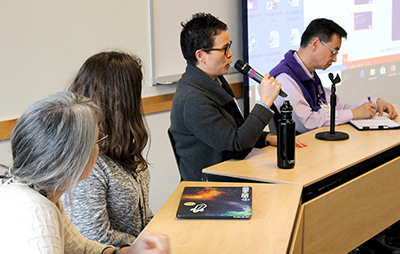
The following panel presentations featured Policy #188 coordinators and disability service providers sharing their own successful practices as well as discussing questions posed by the group.
Amy Rovner and Derek Levy, Shoreline Community College
Our top lessons fall into these four categories: cross-campus collaboration, top-level buy-in, collaboration with peers, and the three P’s: Prioritization, Perserverance, and Patience.
Cross Campus Collaboration: Since accessibility impacts all of campus operations (students, faculty, staff, and the public), we collaborate across multiple departments.
Top level Buy-In: Make your case and align with the current strategic plan. Know what the audience wants to hear and how to incentivize accessibility across campus. Also look at the risks of not being accessible. Where can money come from for these endeavors., and create a very spelled out budget for where each cost goes. Create an Accessible IT Policy.
Collaborate with Peers: Instead of reinventing the wheel, share promising practices. Utilize SBCTC assisting, like captioning subsidies, Ally for Canvas, and various online trainings and webinars.
The three P’s: Prioritization, Perserverance, Patience
- Prioritize what is most important--usually start with risk mitigation (widely used and public facing content), low hanging fruit, and policy and procedures.
- Perservere and continue addressing accessibility issues--often we need to repeatedly explain, demonstrate, and send the message for accessibility.
- Have Patience and realize changing campus culture takes a long time. Recruit allies across campus and apply equity and social justice messages in different ways across campus.
Kimberly Lothyan and Craig Kerr, Edmonds Community College
We created an e-content committee in 2015, which has widespread participation across campus. The eContent committee have all been working together to make sure all online materials are accessible. A sub-committee of the eContent committee have specifically been following the remediation efforts outlined in the University of Montana Office of Civil Rights resolution. The e-content committee was able to create a timeline to tackle each issue and continue addressing issues as they come up. We then went across campus and made sure we had feedback, awareness, and buy-in from all departments related to each issue, as well as starting training and resources on each specific issue.
Monica Olsson, Tacoma Community College
I have five lessons I have learned in my time as a coordinator for accessibility and since the creation of Policy #188.
- Identify your team: Institute a Policy #188 Coordinator outside of the disability office so there can be across campus collaboration. Accessibility is a campus-wide responsibility. Create a team across IT, e-learning, disability resources, and other various task forces, and make their names known to each other and across campus.
- Everything will take longer than you think: Create a plan but be willing to be flexible. These types of collaboration require a growth of trust and building a team. Celebrate whatever levels of progress are possible.
- Acknowledge the fear of messing up: Often people don’t want to participate because they don’t have knowledge about IT or accessibility. Tell everyone it’s okay to not know and provide a lot of opportunity to learn. When faculty pushback based on time, materials, or workload, realize they are afraid of taking on too much or messing up.
- Set the tone: Pay attention to how you talk about this work and how you get others excited. Don’t focus on how hard it can be, but the progress that can be gained by trying. It’s okay to be real, express your own struggles, and find a solution together.
- Include your students: invite student representatives to serve on your campus accessibility committee, host a student panel, and allow students to test documents using their screen readers so you can collect feedback.
Ward Naf, Whatcom Community College, and Jess Thompson, Washington State Board for Community and Technical Colleges (SBCTC)
The Committee for Accessible Technology Oversight (CATO) is helping to create the Accessibility Compliance Tracker (ACT), based on a program Whatcom Community College created to keep track of software all faculty and staff are using and track data on what materials and resources are being used. This way, we can create an inventory via each department on what software and materials need to be kept accessible. We discovered that we have 918 pieces of software being used across campus. In the admin view, we can list what has been assessed and is accessible, which have Voluntary Product Accessibility Templates (VPATs), as well as WCAG 2.0 and Policy #188 requirements for each software.
We may be able to share this tool statewide to track software collaboratively across all institutions. We can set up different levels of permissions as well as find the most commonly used software. We can score software based on accessibility and share that information statewide. We are just in the beginning steps of financing CATO, investigating third party testers, and finding a trusted tester platform.
Panel One Discussion
How will CATO handle third party users and possible copyright violations with software in the ACT?
ADA law overrules copyright law. Furthermore, the programs themselves will not be downloadable from the tracker, just evaluated and rated.
What are some methods for keeping websites accessible?
There are some plug-ins for tracking accessibility. Siteimprove, used at the UW, is one example of a web accessibility tool; it also checks for dead links and misspelled words.
For the ACT, currently, if faculty and staff don’t submit their software, do they get punished or get to not use a software?
There is no punishment, we just ask them repeatedly and explain why we want them to submit their software. We’ve gotten 918 software submissions, which is no small number.
When will the ACT be live across the state?
Hopefully by this summer--everyone could start using the current version, as it will all be transferable to the new version by this summer.
For the training that you did where you had people learning document accessibility, did you have a training document or did people bring their own documents?
I provided a training document to show them each aspect of making a document accessible. I put them in teams to also be able to work together to figure it out. Each person on a team became an expert on a piece of accessibility, and they learned they could all do it. We also provided resources to then take back to their own documents.
How does procurement know about how to get accessible software?
Procurement staff should converse with IT. We can make this process more streamlined by connecting all of these departments and ensuring a process is put in place to make sure accessible software is purchased. We can usually get a lower price when more institutions are involved; for example, we included IT and procurement across Washington State schools for captioning, so we could create a request for proposal (RFP) to get a lower price from a captioning company.
What is the cost of evaluators for something like ACT?
We don’t really have a cost yet--we just started trying to find someone who will take on accessibility of desktop applications and software.
Patrick Pow, University of Washington Tacoma
At University of Washington Tacoma, I first met with the Chancellor’s Cabinet, the Campus Technology Committee, and the Faculty Executive Council to obtain their buy-in to WA Policy #188. We are using the UW Tri-campus IT Accessibility Policy with an implementation schedule to meet the State deadlines. Having been endorsed by the above stakeholders, I visited and explained Policy #188 to all the deans and academic directors with their top administrators, librarians, and the heads of various administration departments. I always bring with me materials and resources (such as the “Diversity includes Disability” stickers) to promote accessibility when meeting with groups on campus. I include accessibility in many different conversations and remind faculty and staff employees that all content must be accessible for all WA State employees and the public.
Using Siteimprove to make sure our campus web site is accessible, we have also provided closed-captioning for all the public facing video materials.
It is important to work with faculty and not just push resources at them. We’ve made sure training program is available to help them create and promote their own accessible resources, and we are working on creating more options for faculty to reach towards and engage with. When I receive push back from some faculty, I have to reason with them that ADA trumps copyright law as well as convert for them accessible materials as needed.
We have also been able to lean on accessibility specialists from UW Seattle who can come down and support our faculty and staff.
Bridget Irish, The Evergreen State College
I have added an accessibility template into the faculty resources and Canvas template, which some faculty try to ignore but I often have to bring it up and promote it. I also created a module of accessibility how-to guides that can be added to the faculty website. I believe all faculty should have the base knowledge of how to make accessible resources and curriculum. By utilizing Canvas and showing how to make those templates and tools accessible, faculty will be more prepared to share knowledge accessibly from the beginning.
Carly Gerard, Western Washington University
Our school has completed four major actions towards a more accessible campus:
- We created an accessibility notice. This includes getting buy-in from across campus and is linked to from every page on our school website.
- We hired two dedicated accessibility staff. This included a digital technology accessibility coordinator and web accessibility developer. This allows us to give more time and attention to staff and faculty, as well as audit more materials to make sure all websites, videos, and documents are accessible.
- We created WWU-based accessibility training for web developers and content creators. We have created a crash course that allows people to finish the training in one day rather than a week.
- We started going through auditing and remediation of public facing websites. We use Wave, Siteimprove, and Deque Axe to help automate testing, as well as manual searching. We aim to fix 100% of errors by July of 2019.
Gaby de Jongh, University of Washington, Seattle
At UW, we can divide and conquer by breaking up aspects of technology accessibility between different specialists. I focus on document accessibility, while other specialists focus on other aspects of accessible technology. Our main responsibility is to reach out to different units and departments, faculty, and staff and informing all content creators of their responsibility to make materials accessible. This creates a big, cultural change which can often create push back and takes patience.
To be successful, we work with Disability Resources for Students (DRS) and reach out to instructors to be proactive to create accessible classroom materials. Also, identifying advocates within each department makes it is easier to promote document accessibility campus wide, and helps with ensuring accessible outward facing material. We also have to understand the workflow of document creators and how they are using the tools they have, show them how they can make materials accessible using these tools.
Be aware of the approach you bring--instead of being authoritarian, show how someone can use what they already know to make content accessible. Often, materials can easily be made accessible if they are using Microsoft tools. Starting with low hanging fruit and having resources ready to offer makes the process more manageable.
Panel Two Discussion
Related to the Canvas accessibility checklist and how-to guides for faculty, all staff and faculty involved with Canvas should be required to take a training. This training should also happen for those using Drupal to create websites as well.
SensusAccess is a free PDF conversion tool for individuals without school email addresses; however, for mass use for institutions, they must have a contract (UW has a contract). It is a 24/7 online automated service, and while it doesn’t create perfect accessible document, it creates a usable document until DRS or a faculty member can create a better accessible document. Ally also has an automated conversion tool.
Canvas 101 course is available online.
Create open-source resources, so they can be shared and used by all. You can learn more about getting an open source license.
Discussion Summaries
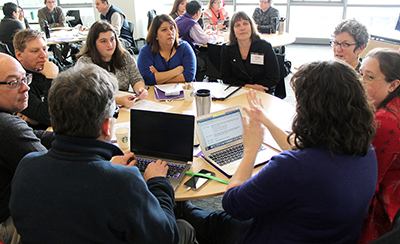
The following are examples of responses given to discussion questions.
What challenges have you encountered in implementing Policy #188? What strategies, if any, have you found to overcome them?
Challenges are wide and far in implementing Policy #188 across postsecondary institutions. A list of discussed challenges is listed below, with a section of specific challenges and mentioned solutions listed under that.
- How do we manage people’s time in getting these tasks done?
- Which videos should be captioned first?
- How do we change campus culture and get buy-in from others, insteading faculty and staff?
- Where do we find the funding?
- How do we make accessibility less overwhelming for others?
- How will we test hardware and software for accessibility?
- How do we get buy-in from all departments?
- How do we make sure open source software is accessible?
- How do we manage leadership turnover and continual changes in strategic plans?
- How do we promote better training resources?
- How do we keep up with changing technology?
- How do we keep things moving fast at a slow-moving institution?
Listed below are challenges and solutions presented by participants:
- Challenge: How do we respond to faculty pushback and non-followthrough?
Solution: Faculty contract negotiated, 10-hour mandatory training for all faculty, won’t be eligible for rehire if they don’t take training. - Challenge: How do we make accessibility a priority within procurement?
Solution: Create a checklist and make a process to ensure software must be accessible or working towards accessibility before purchased. - Challenge: How do we get higher ups and central administration to have a strong message on accessibility?
Solution: Promote and recognize higher administration as models of accessibility and promote how they can use it within their society. Labeling administration as allys can then make them an ally. - Challenge: How do we get more buy-in from stakeholders?
Solution: Show both a big picture and show how changes can make results and a difference. - Challenge: How do we get the information out for where people can find accessibility experts on campus?
Solution: Better communicate across campus how to contact those in charge of accessibility. - Challenge: Where do we find the funding the pay for the training, time, implementation, new software, etc?
Solution: Find money by charging proportional costs to departments or raise the tech fee. - Challenge: How do we test hardware and software for accessibility?
Solution: We created CATO to help manage and test software across campus, and we have promoted someone to be in charge of managing IT accessibility. - Challenge: How do we get buy-in from others across campus departments?
Solution: Spend time building a small team that can then promote accessibility and pull more and more people in. Value trust in relationships and grow until you cover all of campus. - Challenge: How do we get people to make and use accessible PDFs?
Solution: We promote people not using PDF if it is possible, and instead use protected Word documents. If they do have to use PDFs, follow a centralized trusted guide for creating accessible PDFs.
How can campuses work together to implement Policy #188?
- If we can all mention what we do and work across different institutions to complete tasks, as well as share resources. If one campus doesn’t have a policy or message, other campuses that do have those items should share their wording or ideas.
- How can we improve communication among both community colleges and larger universities? We can create more listservs and include more people in communities. Creating a common website or knowledge base would be very helpful to share knowledge that all schools should be using. Piggy back on other meetings to include accessibility in wider circles.
- Adding more people to the larger communities of practice to make sure more people are included in accessibility efforts.
- Having more accessibility experts and coordinators that can work with others across campuses and on individual campuses.
- Join EDUCAUSE, ATHEN, WAPED, and other communities that can share accessibility resources and knowledge.
- Informal collaboration needs to become more formal to allow everyone access to all information and in the loop as possible.
- Host more events to bring us together and collaborate more often.
- Can we get WATEch to do more for Policy #188?
- Developing language for procurement that can be utilized across the state.
- Hire students with disabilities to work across campuses to make sure materials and classes are being made accessible.
- Make sure faculty are included in campus and statewide endeavors for accessibility.
- Have separate four-year institution and two-year institution meetings for accessibility and then meet to share ideas and differences.
- A lot of recent coversations have come up about testing and sharing evaluation tools--can we join these conversations with accessibility?
CBI Participants
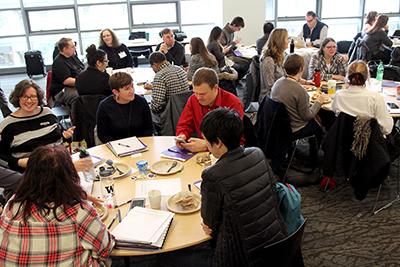
Stakeholder groups represented in the CBI included
- disability student service leaders and administrators,
- postsecondary IT professionals, and
- Policy #188 coordinators.
The following individuals participated in the CBI.
Agnes Figueroa
Deputy CIO
Renton Technical College
Amy Davidson
Program Specialist
Green River College
Amy Rovner
Accessible IT Coordinator, eLearning Services
Shoreline Community College
Ana Thompson
Learning Technologist & IT Accessibility Liaison Lead
UW Bothell
Andy Heiser
Director of Information Technology, Skagit Valley College
Skagit Valley College
Anna Marie Golden
Accessibility Specialist, Accessible Technology Services
University of Washington
Belen Chavez
Disability Support Services Facilitator
Grays Harbor College
Brandy Long
Asst. Director of eLearning
Cascadia College
Brian Chan
Web Developer
Green River College
Bridget Irish
Curricular Technology Support Specialist, Academic Technologies
The Evergreen State College
Carly Gerard
Web Accessibility Developer, Web Communication Technologies
Western Washington University
Carrie Powell
ctcLink OCM Manager / SBCTC
Centralia College
Cebrina Chavez
Program Coordinator, Disability Support Services
Seattle Central
Craig Kerr
Director, Services for Students with Disabilities
Edmonds Community College
Dan Comden
Access Technology Consultant
University of Washington
Daniel Messina
IT, Senior Manager, Application Design & Web Development
Eastern Washington University
David Engebretson Jr.
Accessibility Coordinator
Western Washington University
Derek Levy
Acting Associate Dean, Student Support Programs
Shoreline Community College
Doug Hayman
Technology Specialist, Accessible Technology Services
University of Washington
Elaine Nelson
CMS Specialist, Marketing & Communications
The Evergreen State College
Gaby de Jongh
Accessibility Specialist, Accessible Technology Services
University of Washington
Jacob Kukuk
Developer/Database Admin
Lake Washington Institute of Technology
Jess Thompson
Program Admin, Accessible Tech Initiatives,
SBCTC
Jessica Carey
CPTC - Web Content Manager/Accessible IT Committee
Clover Park Technical College
Kamran Rasul
Director of Assistive Technology
Columbia Basin College
Kathleen Chambers
Instructional Designer
North Seattle College
Kimberly R. Lothyan
eLearning Instructional Designer - ITS
Edmonds Community College
Lyla Crawford
Program Coordinator, Accessible Technology Services
University of Washington
Margery Wyatt
Executive Director of Information Technology
Everett Community College
Maria Ales
IT Specialist IV
Seattle Central College
Marisa Hackett
Disability Resource Services Director, RTC
Renton Technical College
Mary Kay Wegner
Change Management Director / IT Services
Bellevue College
Michelle Eccles
IT Academic Services Manager
WSU Vancouver
Monica Olsson
Access Services Manager
Tacoma Community College
Mony Loeum
Coordinator, Disability Support Services
Lake Washington Institute of Technology
Nina A DeCamp
Business & Auxiliary Services Program Coordinator
Eastern Washington University
Patricia Kruse
Director, Admin & Ops
School of Interdisciplinary Arts & Sciences, UW Tacoma
Patrick Pow
Vice Chancellor for Information Technology
University of Washington Tacoma
Robert Hartman
Helpdesk Coordinator / IT Accessibility Coordinator
Bellingham Technical College
Robert Hartman
Helpdesk coordinator and Electronic IT Accessibility Specialist
Bellingham Technical College
Scott Fraser
Information Systems Specialist III - Vancouver Information Technology
Washington State University Vancouver
Scott Towsley
Director of Technology Services
Yakima Valley College
Sheryl Burgstahler
Director, Accessible Technology Services
University of Washington
Shihong (Steve) Chen
Chief Information Officer
Community Colleges of Spokane
Sue Mokhtarnejad
Enterprise IT Strategy Director
UW Bothell
Tami Jacobs
Dean of Student Success
Pierce College
Terrill Thompson
Accessibility Specialist, Accessible Technology Services
University of Washington
Ward Naf
IT Director
Whatcom Community College
Wendy Steele
Multimedia Designer & Online Learning Accessibility Manager
Washington State University - Global Campus
Communities of Practice
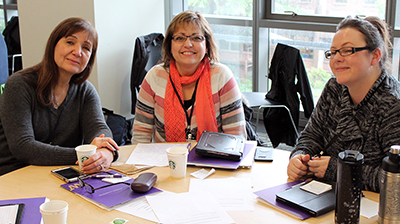
UW Accessible Technology Services engages stakeholders within Communities of Practice (CoPs). CoP members share perspectives and expertise and identify practices that promote the participation of people with disabilities in postsecondary education.
Accessible IT CoP
This CoP is populated with disability services and IT professionals interested in increasing the accessibility of IT in postsecondary education, particularly in Washington State. Participants
- exchange information, ideas, and suggestions for future collaboration,
- gain and share knowledge and help identify issues related to IT accessibility in higher education, and
- recruit others to participate in the CoP.
Universal Design in Higher Education CoP
This CoP is comprised of individuals interested in exploring universal design (UD) and its applications in higher education. Participants on this CoP discuss
- promising practices for infusing universal design on postsecondary campuses;
- applying UD to all educational opportunities that include instruction, technology, student services and physical spaces; and
- specific topics in the book Universal Design and Higher Education: From Principles to Practice and contribute materials to be shared through the Center on Universal Design in Education.
Accessible Distance Learning CoP
Distance learning program administrators, instructors, and support staff use the Accessible Distance Learning CoP to increase their knowledge about disabilities and make changes in distance learning that lead to more inclusive practices. Members discuss
- management,
- staffing,
- training, and
- policy issues related to creating accessible distance learning courses and programs.
You and your colleagues can join the CoP by sending the following information to doit@uw.edu:
- name
- position/title
- institution
- postal address
- email address
- name of the CoP
For information about other CoPs, consult Communities of Practice.
Resources
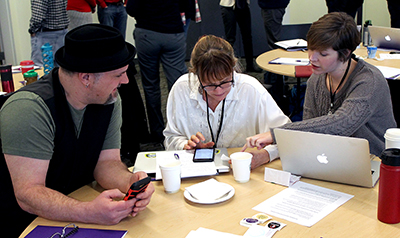
You can find the full text for Policy #188, information about waivers, and the minimum accessibility standard by visiting the following:
- Policy #188
- Standard #188.10 – Minimum Accessibility Standard
- Policy #103 – Technology Policy & Standards Waiver Request
The UW’s Accessible Technology website includes a variety of resources:
- the IT accessibility policy and guidelines for the UW
- legal issues and civil rights complaints and resolutions nationwide
- instructions and tips for making IT accessible
- more resources for creating and procuring accessible IT products
The DO-IT (Disabilities, Opportunities, Internetworking, and Technology) website contains the following:
- information about DO-IT projects
- evidence-based practices that support project goals and objectives
- resources for students with disabilities
- educational materials for teachers and administration
DO-IT maintains a searchable database of frequently asked questions, case studies, and promising practices related to how educators and employers can fully include students with disabilities. The Knowledge Base is an excellent resource for ideas that can be implemented in programs in order to better serve students with disabilities. In particular, the promising practices articles serve to spread the word about practices that show evidence of improving the participation of people with disabilities in postsecondary education.
Examples of Knowledge Base questions include the following:
- Are electronic whiteboards accessible to people with disabilities?
- Are peer review tools accessible?
- Are there computer keyboards designed to be used with only one hand?
- Are touch screens accessible?
- Do postsecondary institutions have to provide assistive technology (for example, screen enlargement or voice recognition software) to students with disabilities who enroll in distance learning courses?
- Does a postsecondary institution have to provide specific hardware or software (known as assistive technology) that an individual with a disability requests so that they can access information technology used on campus?
- Does making our school web content accessible mean I cannot use multimedia on my site?
- How can educational entities determine if their websites are accessible?
Individuals and organizations are encouraged to propose questions and answers, case studies, and promising practices for the Knowledge Base. Contributions and suggestions can be sent to doit@uw.edu.
For more information on making your campus technology accessible and to learn more about accessible learning or universal design, review the following websites and brochures:
- The University of Washington’s hub for information on accessible technology, featuring how to create and develop accessible documents, videos, and websites, can be found at Accessible Technology.
- WCAG 2.0 are the expected guidelines to be followed for all websites.
- The Access Technology Center’s website.
- A list of thirty different web accessibility tips, and how to implement those tips.
- Accessibility training and certification.
- More information about accessibility standards and procurement.
- Cheat sheets for making accessible documents and content, as well as a plethora of other resources for accessible websites, can be found at the NCDAE.
- The AccessDL website shares resources for making distance learning and online courses accessible.
- Accessible University’s website featuring common web accessibility principles and solutions.
- A brochure on universally designing distance-learning programs.
- A brochure on what accessible distance learning is and how it helps students.
- A brochure on the top tips for creating an accessible distance-learning course can be found at the 20 Tips website.
- A brochure on why accessible web design matters, and some resources to make your website accessible, can be found at Accessible Web Design.
- Blindmath is a listserv for those who want to learn more about all issues around accessible mathematics.
- More information on universal design in education can be found at the Center for Universal Design in Education.
Conferences can be a great way to share resources, collaborate, and come up with new ideas. Consider attending the following:
- ATHEN (Accessing Higher Ground)
- CSUN
- ATIA
- Closing the Gap
- Smaller, local IT conferences, like TechConnect
- NW E-Learn
- EDUCAUSE
- Building Bridges
- Faculty Accessibility Retreat for 2-year colleges
Acknowledgments
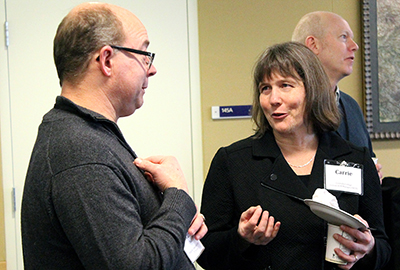
The Washington State Accessible IT Capacity Building Institute on Policy #188 was funded by Access Technology Services at the University of Washington. Any opinions, findings, and conclusions or recommendations expressed in this material are those of the CBI presenters, attendees, and publication authors and do not necessarily reflect the views of the University of Washington.
Accessible Technology Services
University of Washington
Box 354842
Seattle, WA 98195-4842
www.washington.edu/accessibility/
www.washington.edu/doit/
206-685-3648 (voice/TTY)
888-972-3648 (toll free voice/TTY)
206-221-4171 (FAX)
509-328-9331 (voice/TTY) Spokane
© 2018 University of Washington. Permission is granted to copy this publication for educational, noncommercial purposes, provided the source is acknowledged.